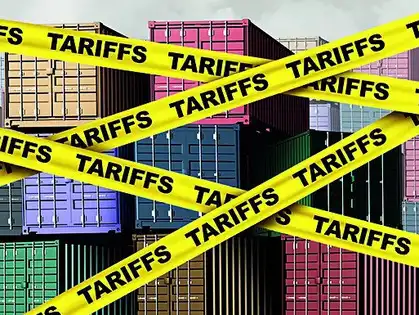Donald Trump’s tariff gambit has undeniably thrown the world into turmoil. By relying on a series of bilateral tariff bargains, he has effectively sidelined the multilateral framework of the WTO. Technically, MFN tariffs under WTO rules remain in place, since his proclamations still require judicial clearance—questions linger over whether he has bypassed Congress in doing so. Yet, as in other cases, if his “national security” justification fails, he is likely to fall back on another pretext, perhaps invoking Article 301. With largely compliant legislators backing him, the likelihood of any rollback appears slim.
More troubling is his decision to link trade deals to non-trade issues—wars, political loyalties, and even personal considerations. Such moves are only possible in a post–Cold War world, but they have sparked two major anxieties. The first is that his on-again, off-again maneuvering in the Middle East and Ukraine could ignite a wider global conflict, a possibility that cannot be dismissed outright. The second is whether the world risks sliding into a 1930s-style global recession.
The geopolitical dimension requires a broader discussion. Here, however, the focus is on the economic question: is a tariff war inevitable, and could it contract global trade? While Trump’s unilateral political style is deeply unsettling, the evidence suggests that his economic gambit is unlikely to trigger a tariff-induced global depression—for several reasons.
To begin with, 2025 is very different from the 1930s. Back then, the world operated on the gold standard, unlike today’s flexible exchange rate system. In the ’30s, a unilateral tariff hike by an importing country raised domestic prices, which in turn reduced import demand. Exporting countries responded with retaliatory tariffs to protect their home markets, creating a spiral of “competitive tariff retaliation.” The result was catastrophic: world trade shrank by nearly 60 percent. By contrast, today’s flexible exchange rates cushion such shocks. Currency depreciation can absorb much of the impact, ensuring that domestic prices in export markets remain relatively stable. Although some immediate price adjustments occur, gradual depreciation offsets tariffs over time—a process known as exchange rate “pass-through.”
Evidence of this is already visible. According to the DXY index maintained by the U.S. Federal Reserve since 1973, the dollar has weakened (appreciated) by about 4.2 percent against major currencies over the past six months. Commodity trade, often the most sensitive to tariffs, has been stagnant in real terms since 2008, even as services trade has grown. In many cases, companies absorb tariff-related costs rather than passing them on to consumers, especially when demand is price-sensitive. Market access, after all, outweighs short-term profitability. United States Trade Representative (USTR) research confirms this: a 1 percent tariff increase has led to only a 0.25 percent rise in domestic prices in recent years. Trading firms offset costs through exchange rate adjustments and slimmer profit margins. Since it was runaway price increases that triggered the destructive tariff wars of the 1930s, the present environment makes a repeat far less likely, especially given the allure of the U.S. market.
Another crucial distinction between today and the 1930s lies in the structure of global trade itself. Foreign direct investment (FDI) now plays a central role, with about 60 percent of trade occurring between subsidiaries of multinational corporations. Much of this trade involves intermediate inputs assembled into final products within global value chains (GVCs). Because GVC trade is driven by TNCs, production can be shifted across borders to mitigate the impact of tariffs. In effect, global corporations can treat tariff-induced costs as “trade costs” and adjust their supply chains accordingly. As I have argued in detail elsewhere (FDI or Trade: End the Confusion, 16/6/2024, Mint) trade and FDI are but two sides of the same coin.
The adaptability of global production networks is already visible. Large Indian textile exporters, for instance, are preparing to move operations to Vietnam, Myanmar, and Bangladesh in order to retain access to the U.S. market. Such restructuring allows exports to continue flowing, as what is taxed in one jurisdiction can be reclassified as deductible costs in another. The result is that overall profits remain protected, even as supply chains shift. This adaptability is precisely why Trump’s vision of reviving U.S. manufacturing through tariffs is unlikely to materialize.
In short, while Trump’s political unilateralism may destabilize geopolitics, his tariff strategy is unlikely to push the world into a repeat of the 1930s. Flexible exchange rates, multinational corporate networks, and global value chains serve as shock absorbers. What tariffs do create is uncertainty and inefficiency, but not the global collapse of trade seen nearly a century ago.
The final element is that as a consequence of the Great Depression of the 1930s a multilateral system of institutional cooperation does exist even though Trump may be pulling the US out of it. Yet the network of trade, FDI and the system of Regional Trading Arrangements (RTAs) will either frustrate Trump’s ultimate aim of bringing manufacturing production back to or create great economic long term loss to the US itself. It is only the multilateralism of the WTO that has suffered a set back not the cooperation in other fora including plurilateral trading arrangements.
The impact Trump can have on international trade is limited. But his impact on international political relations can leave an indelible mark and have serious military dimensions. Hopefully, 2028 is not so far away.
Manoj Pant
Former VC, IIFT and Visiting Professor, Shiv Nadar University


💬 Comments
Share your thoughts on this policy
No comments yet. Be the first to comment!